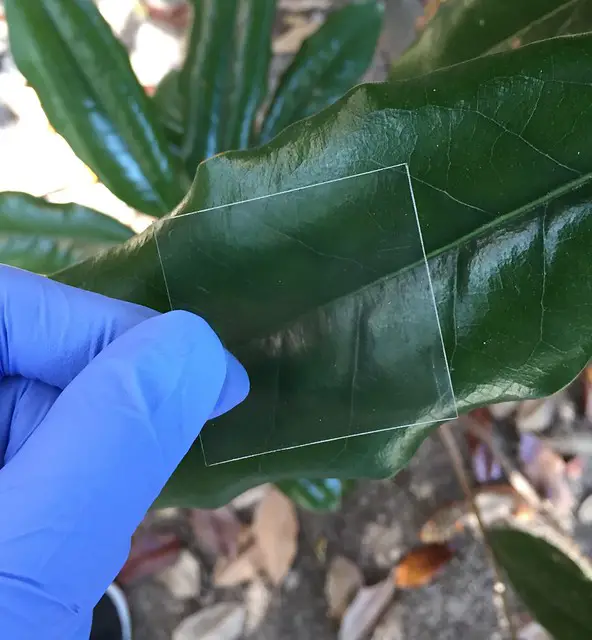Scientists Develop Glass Made Of Wood That Outperforms Traditional Glass In Almost Every Way Possible
Tags: News

Can you imagine a scenario where you are looking through trees to a greener future?
This scenario might be coming true as trees are replacing the clear pane glass in windows.
FPL or Forest Products Laboratory researcher Junyong Zhu has worked in tandem with colleagues from the University of Maryland and the University of Colorado to develop a transparent wood material that can be considered as the window for a brighter tomorrow.
The researchers had found that the transparent wood had the potential to outperform traditional glass, when used in constructions, in every aspect.
The researchers published their work in the Journal of Advanced Functional Materials in their paper, “A Clear, Strong, and Thermally Insulated Transparent Wood for Energy Efficient Windows.”
Transparent Wood Might Be The Best Alternative For Glass
Glass is the most common material that is used to construct windows and it comes with a hefty price, both economically and ecologically.
Heat can easily travel through glass (especially single-pane ones) and leads to higher energy costs during the winters when this heat escapes easily. The carbon footprints left after the production of glass is also quite high. Manufacturing emissions are approximately 25,000 metric tons per year.
Subscribe to our Youtube channel, new videos every week:
The discovery of transparent wood is being hailed as one of the most promising materials of the future. It was created when the wood from the balsa tree was treated in room temperature in an oxidizing bath which bleached all of its visibility. The wood was then penetrated with PVA (polyvinyl alcohol), which is a synthetic polymer, to create a product that was glass-like.
The natural cellulose in the structure of wood and the energy-absorbing polymer meant that it was more durable and lighter than traditional glass. It can also withstand stronger impacts than the former and bends/splinter instead of shattering.
The USDA Was Quite Impressed, Sweden Took It A Step Further
The USDA was quite impressed with the creation, “With all of these potential benefits for consumers, manufacturing, and the environment, the case for transparent wood couldn’t be…clearer.”
READ: SCIENTISTS PLAN TO PRODUCE FURNITURE FROM LAB-GROWN WOOD
It will be quite cost-effective to switch to transparent wood as it is 5 times more thermally efficient than glass, which would help you to cut down your energy costs. The material is made from a renewable resource with pretty low carbon emission and is also compatible with the current industrial equipment. The transition into manufacturing this material will be quite easy.
The transparent wood is offering several benefits for its consumers, the manufacturing units, and especially the environment.
Another team of researchers from Sweden’s KTH Royal Institute of Technology has taken the idea one step ahead and has filled the transparent wood with a polymer called polyethylene glycol (PEG), giving it the ability to absorb and release heat. It could make cooling and heating homes even less costly.
READ: IN NORTHERN CALIFORNIA YOU CAN PEDAL THROUGH THE REDWOOD FOREST ON RAIL BIKES
Celine Montanari, a researcher who was involved in the KTH study said: “During a sunny day, the material will absorb heat before it reaches the indoor space, and the indoors will be cooler than outside. And at night, the reverse occurs — the PEG becomes solid and releases heat indoors so that you can maintain a constant temperature in the house.”
PEG is a phase-changing material that starts as a solid and melts at a certain temperature. When it is dissolved, it can store heat and in the solid-state, it can release the heat that was trapped previously.

Leave Comment: